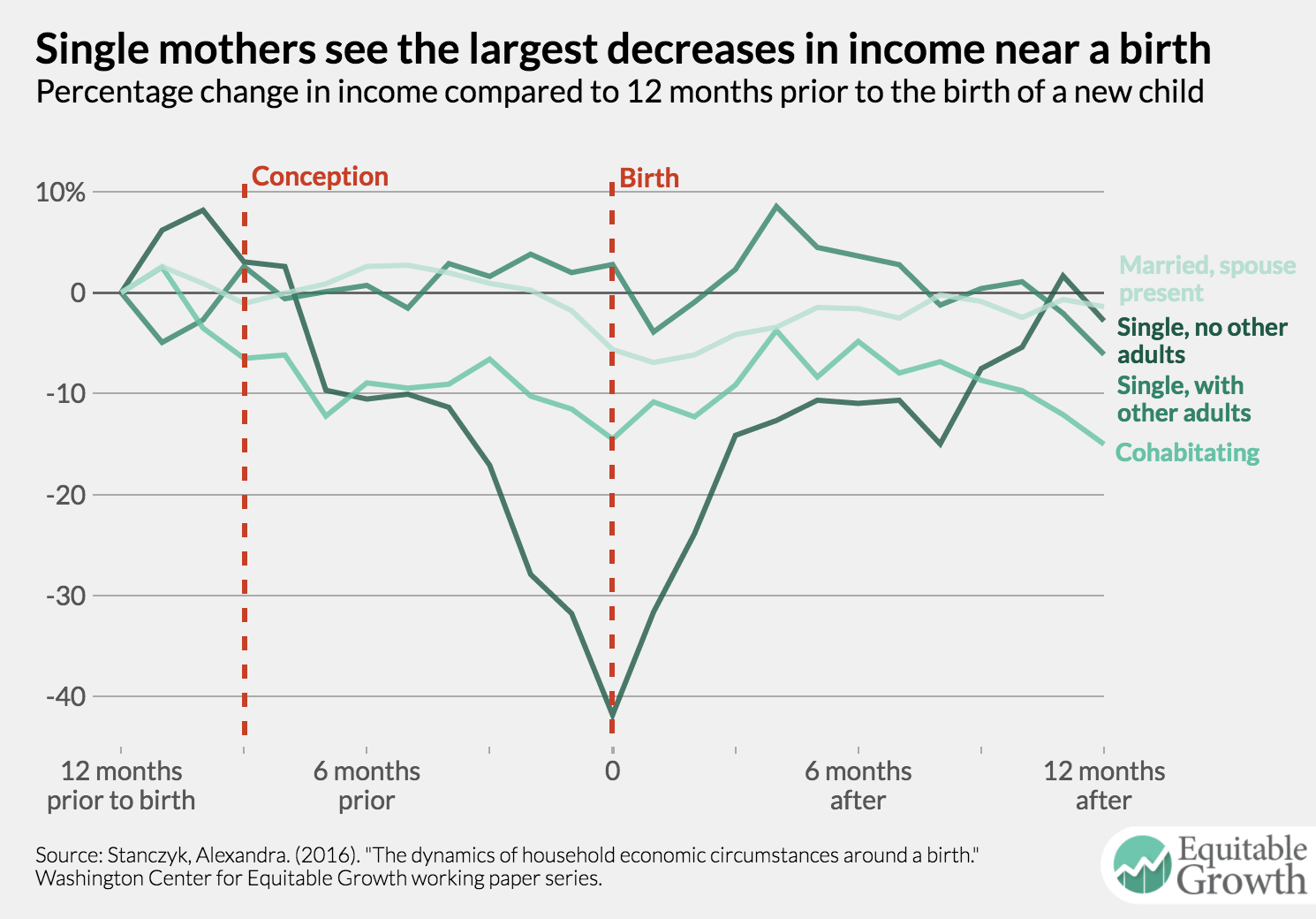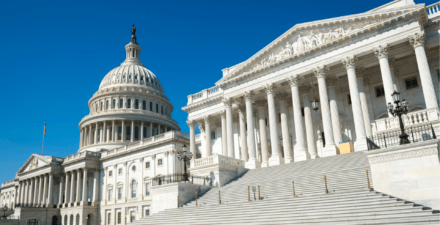Paid family and medical leave in the United States: A data agenda for practitioners

Overview
The United States is an outlier among developed nations for its lack of a national paid family and medical leave program. New parents across our nation struggle to balance the demands of their jobs with the responsibilities for their families. What’s more, the need for paid leave is growing as the U.S. population ages and more working adults are responsible for aging parents or in need of support to recover from their own illnesses or injuries. Existing paid leave programs do not reach everyone, with low-income working families most in need of support the least likely to have access to benefits.
In the absence of federal policy, a growing number of states have adopted their own paid leave programs. California, New Jersey, and Rhode Island have had programs providing paid leave for new parents, caregivers, and medical leave in place for years. Since 2017, three new states (New York, Washington, and Massachusetts) and the District of Columbia have all passed paid family and medical leave laws. Data from these programs allow researchers to generate a clearer understanding of how paid leave affects workers, families, and employers in these states.
More work remains to be done to understand the nuances of these programs’ effects. Doing so will require additional groundwork to create better data to inform policy. This issue brief presents a brief guide to the available data, drawing upon our newly released paper, “Paid family and medical leave in the United States: A data agenda.”
Download FilePaid family and medical leave in the United States: A data agenda for practitioners
Background
A report issued by the Washington Center for Equitable Growth in 2018 organized the existing evidence on paid leave in the United States into a framework for understanding the channels through which each type of paid leave (parental, caregiving, and medical leave) affects economic outcomes via individual-level employment and health outcomes, firm-level outcomes, and the broader macroeconomic effects. That report elevated what we know about paid leave’s economic impacts and makes the case that the sum of the research to date suggests compelling economic evidence through multiple channels demonstrating the effectiveness of paid family and medical leave for families, businesses, and the broader economy.
That paper also acknowledged the gaps in the knowledge base that remain, among them multiple dimensions of the economic effects of paid caregiving leave on both caregivers and care recipients, as well as broader program interactions between paid leave and other social insurance and social safety net programs. The paper then outlined a research agenda designed to inform future policy efforts aimed at supporting the millions of Americans managing both work and caregiving across the life-cycle.
Making progress on that research agenda, and therefore on evidence-backed policy, requires the use of high-quality data. Our follow-up report released today assesses the state of the data available for answering many of the remaining questions about paid leave in the United States and offers a blueprint for building the necessary data architecture to advance evidence-backed policy. Existing survey data and new sources of administrative data from both state and federal sources—see our comprehensive spreadsheet below and our glossary of data sources—advance the knowledge base on how paid family leave impacts families, firms, and the economy as a whole.
Survey data
Existing data on paid family and medical leave comes in two main forms. Surveys rely on a sample of respondents’ answers to questions. The Department of Labor Family and Medical Leave Act Worksite and Employee Survey (known as the DOL FMLA survey), conducted in 1995, 2000, and 2012, is perhaps the most widely known relevant example of existing survey data. But other important surveys also include relevant information, including multiple datasets from the U.S. Census Bureau and the U.S. Bureau of Labor Statistics, and university-based datasets such as the Panel Study of Income Dynamics, the National Health and Aging Trends Study, and the Health and Retirement Survey.
Survey data can be rich in detail on key factors such as demographics, as well as on the nuances of the variety of care needs, among them medical conditions and employment limitations. Yet because survey data relies on individuals’ recall of key details regarding employment, earnings, and health status, this data is sometimes viewed as unreliable. Moreover, most survey data do not include repeat observations of the same people (so-called longitudinal data), and many surveys are collected only once or at irregular intervals. This means utilizing surveys to ascertain the effectiveness of paid family and medical leave programs presents methodological challenges that require creative approaches from researchers seeking to establish valid results.
Administrative data
Administrative data, which are collected by state governments and the federal government in the process of operating programs and providing benefits, is a rich and currently underutilized resource. States with existing paid leave programs collect information on program applicants and participants as part of program administration in order to determine eligibility, benefit levels, and benefit durations, and to monitor participation and progress toward desired outcomes. Even in the absence of a federal paid leave policy, federal administrative data sources can play a key role in providing evidence as well.
Just one case in point: Data from the Internal Revenue Service and the Social Security Administration include important information about earnings and labor force participation that can be compared across states with and without paid leave policies. While administrative data may not have the rich details included in some survey datasets, it is generally seen as the gold standard for understanding program uptake and impacts over time due to the large number of repeated observations and highly inclusive universe of individuals included.
The new data agenda
To date, paid leave researchers have relied on a patchwork of survey and administrative data sources to make headway on key research questions pertaining to paid parental, caregiving, and medical leave. A detailed summary of the data landscape for each of these pieces of the paid leave policy puzzle is available in our longer report, available here. Yet substantial work remains to be done in creating the evidence base necessary for understanding how best to design paid family and medical leave policies that not only support families in their efforts to juggle work and caregiving responsibilities, but also boost overall economic performance.
In each case, but especially for caregiving and medical leave, substantial additional work remains to be done to create the necessary data landscape for headway on open research questions. Examples of key questions in need of better data include how variations in policy design impact labor market outcomes across all three types of leave, how access to medical leave impacts labor market and health outcomes, and a wide variety of basic questions about the demand for and impact of caregiving leave.
Practitioners, including state and federal policymakers, advocates, data administrators, and philanthropists, have a key role to play in helping to strengthen the data infrastructure in service of generating sound empirical evidence on the economic impacts of paid family and medical leave policy. In particular, policymakers can:
- Ensure state and federal agencies have the necessary infrastructure in place to protect privacy while allowing data sharing for research purposes, including appropriate technological and human resources
- Remove legislative barriers to creating data-sharing agreements
- Support and fund additional waves of important existing surveys that collect data on paid family and medical leave
- Advocate for the inclusion of questions on paid family and medical leave in existing surveys that do not currently collect data on the topic
- Partner with the growing community of paid family and medical leave scholars to evaluate the effects of new and existing state-level programs (and changes to those programs), providing access to administrative data sources early on in the process
Philanthropists also have a key role to play. They can:
- Commit to long-term funding for researchers pursuing data-sharing agreements and data linkages across state and/or federal agencies. Negotiating such agreements and linkages takes much longer than a year and thus requires sustained financial backing from investors.
- Consider funding new questions and/or new modules for existing large representative surveys, such as the Panel Study of Income Dynamics.
- Invest in coalitions that actively cultivate relationships with state and federal legislatures and agencies in order to advocate for proactive planning around data sharing for new programs.
- Invest in expanded versions of data toolkits, such as the recent report issued by Equitable Growth, in order to provide a more extensive guide for researchers interested in accessing administrative data, covering topics including:
- A step-by-step process for requesting data from the states (including contact information for the office and/or person responsible for executing data-sharing agreements in each state).
- A sample of Memorandum of Understanding or Data Use Agreement.
- Resources for state data administrators who are interested in cleaning and coding their data for sharing.
- Model legislative or regulatory language that states could use to ensure accurate and secure sharing of data from newly implemented programs.
Conclusion
The momentum around paid family and medical leave in the United States is genuine and much-needed. A growing number of state and federal policymakers are recognizing that the longstanding gap between family caregiving responsibilities and labor market responsibilities are a drag on family economic security, national economic performance, and global competitiveness. This momentum creates a window of opportunity for policy action that meets the nation’s economic needs while also advancing a data-backed approach to policy.
The strong foundational research on paid family and medical leave provides the first step, allowing a growing number of states to develop programs with confidence that they’re headed in the right direction. The time has come to take that next step—to fill out the data landscape so that existing programs are continually improved and future policies are on even firmer empirical footing. The results will ultimately improve the socioeconomic well-being of countless families and the U.S. economy as a whole.






